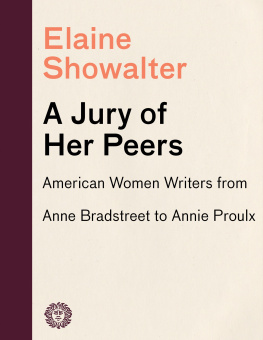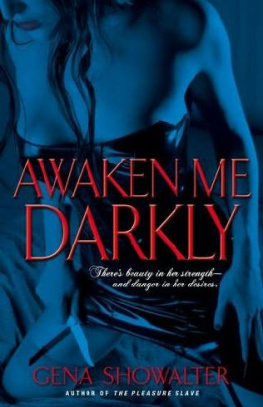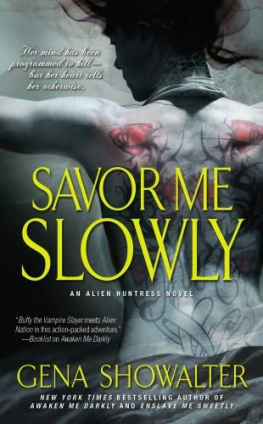Elaine Showalter - A Jury of Her Peers
Here you can read online Elaine Showalter - A Jury of Her Peers full text of the book (entire story) in english for free. Download pdf and epub, get meaning, cover and reviews about this ebook. year: 2009, publisher: Knopf Doubleday Publishing Group, genre: Non-fiction. Description of the work, (preface) as well as reviews are available. Best literature library LitArk.com created for fans of good reading and offers a wide selection of genres:
Romance novel
Science fiction
Adventure
Detective
Science
History
Home and family
Prose
Art
Politics
Computer
Non-fiction
Religion
Business
Children
Humor
Choose a favorite category and find really read worthwhile books. Enjoy immersion in the world of imagination, feel the emotions of the characters or learn something new for yourself, make an fascinating discovery.
- Book:A Jury of Her Peers
- Author:
- Publisher:Knopf Doubleday Publishing Group
- Genre:
- Year:2009
- Rating:4 / 5
- Favourites:Add to favourites
- Your mark:
- 80
- 1
- 2
- 3
- 4
- 5
A Jury of Her Peers: summary, description and annotation
We offer to read an annotation, description, summary or preface (depends on what the author of the book "A Jury of Her Peers" wrote himself). If you haven't found the necessary information about the book — write in the comments, we will try to find it.
A Jury of Her Peers — read online for free the complete book (whole text) full work
Below is the text of the book, divided by pages. System saving the place of the last page read, allows you to conveniently read the book "A Jury of Her Peers" online for free, without having to search again every time where you left off. Put a bookmark, and you can go to the page where you finished reading at any time.
Font size:
Interval:
Bookmark:
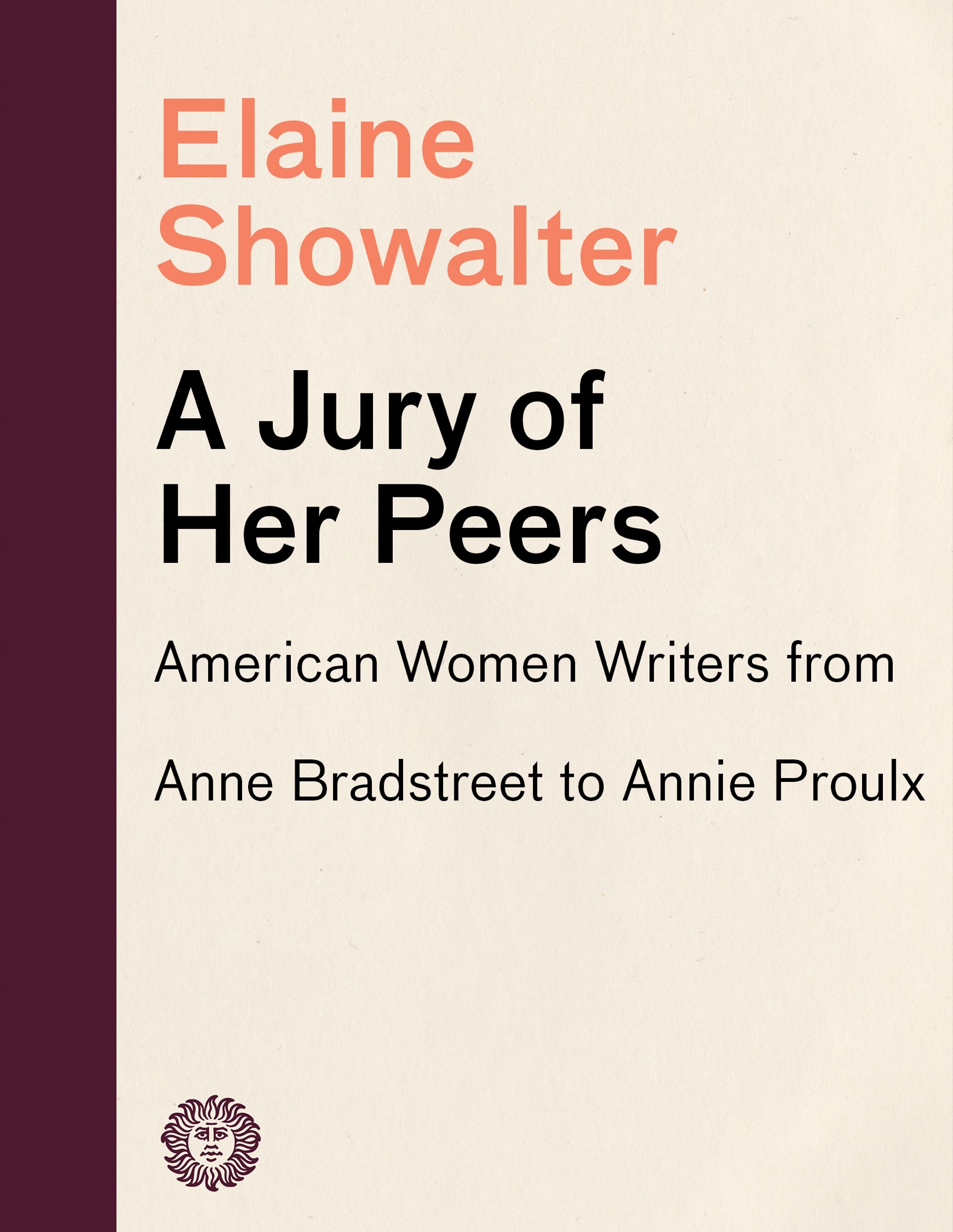
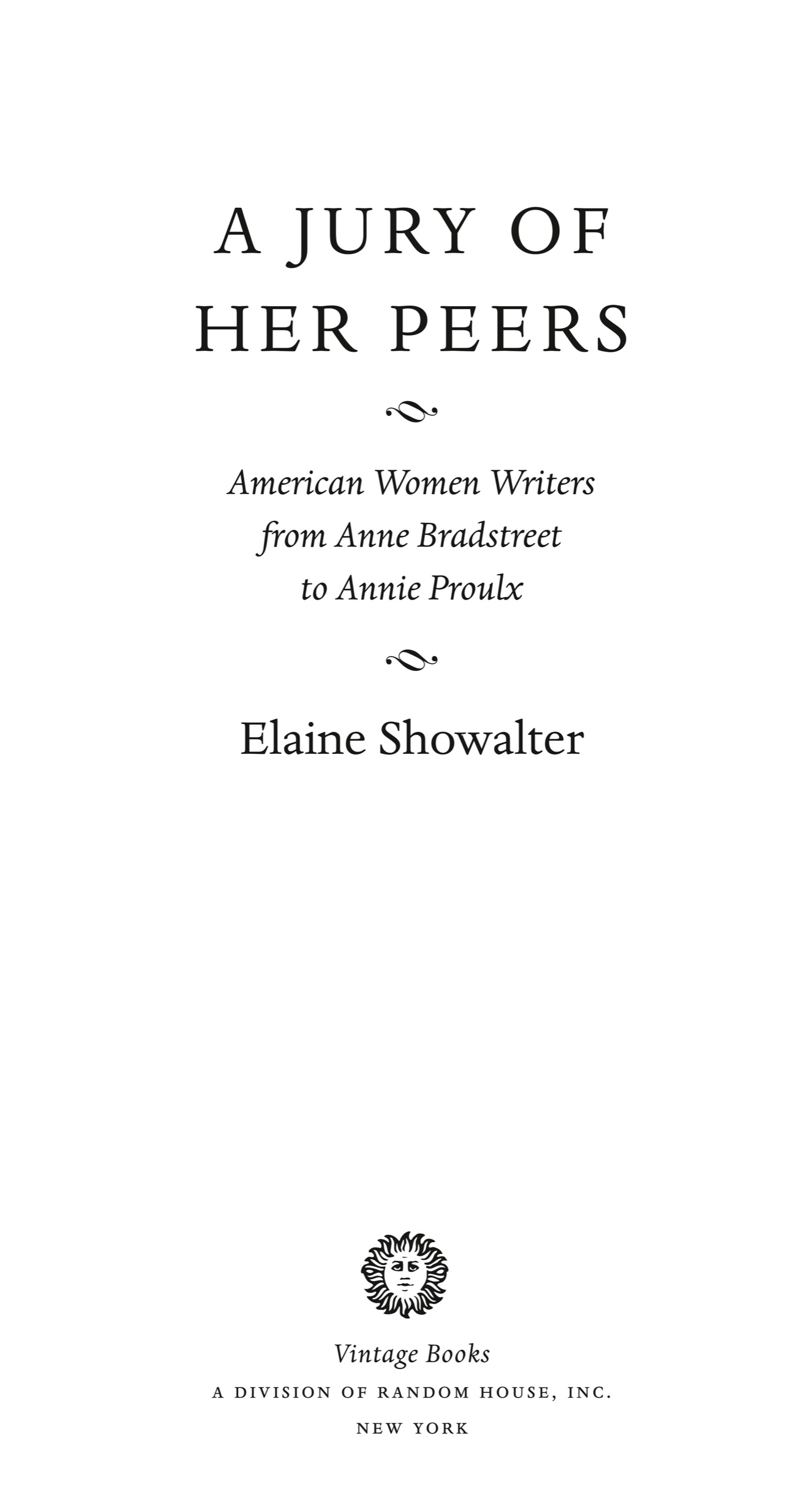
Also by
E LAINE S HOWALTER
A Literature of Their Own: British
Women Novelists from Bront to Lessing
The Female Malady: Women, Madness,
and English Culture
Sexual Anarchy: Gender and Culture
at the Fin de Sicle
Sister's Choice: Tradition and Change in
American Women's Writing
Inventing Herself: Claiming a Feminist
Intellectual Heritage
Hystories: Hysterical Epidemics
and Modern Media
Teaching Literature
Faculty Towers: The Academic Novel
and Its Discontents
To Diane Middlebrook
in loving memory
| 1. |
| 2. |
| 3. |
| 4. |
| 5. |
| 6. |
| 7. |
| 8. |
| 9. |
| 10. |
| 11. |
| 12. |
| 13. |
| 14. |
| 15. |
| 16. |
| 17. |
| 18. |
| 19. |
| 20. |
In 1900, while she was a fledgling newspaper reporter in Des Moines, Iowa, Susan Glaspell covered a sensational murder case in which a farm woman was accused of murdering her husband. Glaspell was so haunted by the trial that she turned it into a one-act play, Trifles, in 1916, and then into a short story, A. Jury of Her Peers, in 1917. In both versions, two other farm women, Mrs. Hale and Mrs. Peters, are summoned away from their household chores to accompany their husbands, the county attorney and the sheriff, to an isolated house where the miserly and reclusive John Wright has been found strangled in his own bed with a rope around his neck. His wife, Minnie, has been arrested for the crime, which she denies committing; and the sheriff and his party have come to the farmhouse to search for clues, while their wives pack some clothes to take to Minnie in the county jail where she awaits trial.
Minnie herself, in fact, never appears in either the story or the play, which are less about her innocence or guilt than about the ways the men and the women who are thinking about the murder reach conclusions and judgments. What's needed for a conviction, the men explain, is a motive, something to show anger or sudden feeling. But as hard as they search the chilly farmhouse, they are unable to find the sort of clear physical evidence they need. Their wives, however, notice domestic details and the trifles that signify Minnie's mental distressa half-filled sack of sugar from the bin; a half-cleaned kitchen table; a piece of patchwork sewn with wild stitches. Taking in the desolation of the childless house, the women haltingly begin to express their own remorse at having failed in friendship to Minnie and perhaps colluded in the isolation that finally drove her mad. Their mounting identification with Minnie's hard life is intensified by the men's loud laughter and mockery of women's trivial concerns as they come through the kitchen on their way to search the barn. When Mrs. Hale and Mrs. Peters discover a strangled canary in Minnie's sewing box, and see the twisted door of its cage, they arrive at a mutual but unspoken conclusion: that John Wright wrung the bird's neck, that he violently silenced the one source of pleasure, music, and joy in his wife's bleak life, and that with the strength of madness, she retaliated by strangling him with a rope, as if executing him by hanging. Wordlessly, the women conspire to conceal or destroy the evidence they have found, and to protect Minnie from the patriarchal system of the Law. In effect, they constitute themselves as a jury of her peers, and they acquit her of the crime of murder.
Since it was rediscovered and reprinted in the 1970s, A Jury of Her Peers has been widely discussed in law school courses, law review articles, and symposia on civil procedure and criminal law. It is often cited in discussions of jury selection and analyses of the meaning of the term peer. Legally and politically, women were not the peers of men in 1917, when feminists were engaged in the final years of effort to secure the vote. In 1893, the suffrage activist Lucy Stone had demanded a jury of her peers for the accused murderer Lizzie Borden, contending that only women could understand Borden's actions and motivations. No state in 1893, however, and few in 1917, permitted women to serve on juries. Utah was the first to grant the right in 1898, but not until 1968 did Congress pass legislation guaranteeing it to women in the entire United States. As law professor Patricia L. Bryan has commented, many legal experts have come to recognize what Susan Glaspell suggests that the patriarchal norms and expectations of those who stood in judgment, both as jury members and as members of the community, prevented the legal system from doing justice.
Feminist critics have also interpreted A. Jury of Her Peers as a parable of the fate of the American woman writer in a literary culture organized around patriarchal norms, values, judgments, and laws. Just as women were not allowed to serve on juries, so, too, were they left out of the scholarly editorial boards, panels of consultants, and academic leadership posts that established authoritative critical judgments. Histories of American literature traditionally excluded women from their boards of editors. The first such survey was written in 1879 by Moses Coit Tyler, a professor at the University of Michigan who thanked fourteen men of letters and working-brothers for help in his preface.In 1948, the year Glaspell died, the Literary History of the United States was edited by fifty-four men and one woman. Although she won a Pulitzer Prize for drama in 1931 and was ranked in her lifetime with Eugene O'Neill, Glaspell herself quickly dropped out of the literary canon.
Why did this woman disappear from literary history? Repeatedly, in looking at studies and biographies of individual American women writers, I came upon the same question. How could Lydia Maria Child, a woman so influential in her own day and so perceptive about issues still relevant to ours have just disappeared from literary and historical textbooks? What has happened to Constance Fenimore Woolson's reputation? Why is it that a writer who was numbered among the country's best has been forgotten? Why didn't Mary Austin become the Owen Wister of the woman's Western? Why is Zona Gale still such an obscure figure? If The Time of Man [by Elizabeth Roberts] is as good as I think it is, how did it happen to disappear so soon, almost without a bubble to mark the spot? Why don't Americans know about such landmark books as Julia Ward Howe's Passion-Flowers (1854), Pauline Hopkins's Of One Blood (1903), or Nella Larsen's Quicksand
Glaspell's story asks us to consider what we mean by a peer. Is it someone of the same sex? The same race? The same age or class or region? Someone who shares a common language or cultural code? Nothing in U.S. law or in the Constitution defines or guarantees such fine-tuned rights, although an elaborate science of jury selection has developed to find jurors likely to agree with a lawyer's case. Women are not always sympathetic to a woman defendant, and nothing prevents men from understanding women's stories when they are taught how to read them. Clearly the sheriff and the county attorney in Glaspell's story could be taught to recognize Minnie's clues and to interpret them as motives; otherwise Mrs. Hale and Mrs. Peters would not need to conceal and destroy the evidence. My experience in teaching
Font size:
Interval:
Bookmark:
Similar books «A Jury of Her Peers»
Look at similar books to A Jury of Her Peers. We have selected literature similar in name and meaning in the hope of providing readers with more options to find new, interesting, not yet read works.
Discussion, reviews of the book A Jury of Her Peers and just readers' own opinions. Leave your comments, write what you think about the work, its meaning or the main characters. Specify what exactly you liked and what you didn't like, and why you think so.

